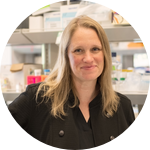About This Project
The maternally vertical transmitted bacterial reproductive parasite Wolbachia occurs in ~50% of all arthropods including the pillbug Armadillidium vulgare. In some pillbugs, Wolbachia feminizes genetic male offspring into functioning anatomical females. A second feminizing phenomenon is a nuclear insert called the f-element. We will be the first to determine the frequency of thes two sex ratio distorter distribution in A. vulgare across the United States.
Ask the Scientists
Join The DiscussionWhat is the context of this research?
In 2022 Durand et al.published a paper documenting the distribution and types of Wolbachia related sex ration distorters (SRD) for A. vulgare in Europe and Japan. This study followed previous works documenting the SRDs in pillbugs. Durand, 2022 was the first study showing how common these SRDs were and how the SRDs related to CO1 haplotypes. The study painted an interesting picture of A. vulgare evolutionary dynamics in relation to Wolbachia. The obvious gap for us to try and fill is the absence of North American data, since A. vulgare is the most common pillbug in the United States.
What is the significance of this project?
The idea that a bacterial infection can control an organism's reproduction is amazing to my students. We previously cultured A. vulgare and documented the feminization in vitro, however we have not looked at genetic screenings across a wider geographic area. Knowing how common the distribution of Wolbachia and the f-element are and how they are genetically grouped, will provide greater insight to the field of holobiomics and Wolbachia related symbiosis. Research questions: How common are the SRDs across the United States and are there any correlation between mitochondrial haplotypes and Wolbachia and/or f-element SRDs?, and How diverse are SRD Wolbachia Supergroups across the US?
What are the goals of the project?
We started collecting spring/summer and PCR this fall 2023 . Our experimental design includes euthanized pillbug DNA extraction and purification using spin columns. We will use the eluted DNA to run multile PCR reactions with seperate primers to sequence CO1, and detect Wolbachia and the f-element SRDs. The CO1 and Wolbachia positive PCR products will be Sanger sequenced. We will use bioinformatics for CO1 barcode pillbug ID confirmation, CO1 sequence alignment with 23 known mitochoindrial haloptypes, Wolbachia supergroup ID, and correlation between CO1 haplotypes and Wolbachia. We also will determine statistical frequency of SRDs in each state sampled and evaluate genetic distance between them.
Budget
The bugetary need of this project focus on Sanger sequencing. We predict the range of our samples to be between approximately pillbugs. We will sequence CO1 (mitochondrial) regions in each pillbug in order to determine haplotype affiliation. We will also sequence Wsp for Wolbachia positive pillbugs. Each sequence is $3.15 a direction, with a complete sequence being aproximately $6.50. Without sequencing, we will not be able to make comparisons or determine distribution or frequency of the sex ratio distorters. We are basing the budget items on a one direction ($3.15) sequerncing cost.
Endorsed by
 Project Timeline
Project Timeline
April to October 2023 pillbugs were collected from 10 US states and during the fall of 2023, 8 high school students will extract DNA from pillbugs from each location. PCR of all CO1 and SRD positive samples will be sent for Sanger sequencing. In 2024 they will bioinformaticlly analyze haplotype/SRD relationships. Manuscript writing will follow in spring 2024. This project directly supports their high school problem-based learning.
Aug 04, 2023
Project launched by pillbugs collection across 10 states through Twitter social media campain. Samples recieved and stored for analysis.
Oct 29, 2023
Project Launched
Nov 30, 2023
DNA Extraction and PCR of Pillbug Samples for CO1 haplotype determination and sex ratio distorter assay.
May 10, 2024
Poster of Preliminary Results for School Symposium
Mar 31, 2025
Sanger sequencing ends for CO1 and SRD positive samples.
Meet the Team
Affiliates
Robert Kuhn
I am originally from Western Pennsylvania and Northern Virginia. I attended the University of Georgia for my BS and MS. I worked for 2 years at the Georgia Environmental Protection Division Solid Waste and 1 year in private consulting as an environmental scientist. I transitioned to teaching at Coile Middle School in Winterville, GA in 1997 and Centennial High School in Roswell, GA in 1999 where I primarily taught AP and honors biology. I changed school settings in 2021 to Innovation Academy STEM School where I now teach biotechnology and sponsor DNA Club.
The team will consist of 4-5 high school students (grades 10-12). The team is part of a larger independent research club called DNA Club which currently has 40 students. The students perform this research on their own time. There are no grades involved, so it is an intrinsic endeavor for them. The goal of DNA Club is for students to perform high level independent biology research in high school.
Additional Information
Project Backers
- 22Backers
- 100%Funded
- $2,009Total Donations
- $91.32Average Donation

